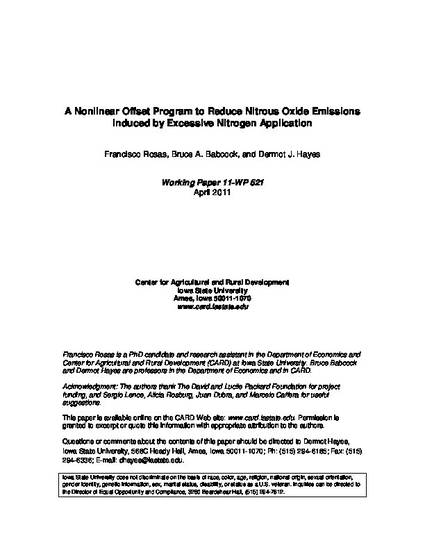
Farmers may choose to apply nitrogen fertilizer at a rate that exceeds the average ex post agronomically optimal rate when the yield response to nitrogen varies across growing seasons. Negative environmental consequences such as nitrous oxide (N2O) emissions and/or water pollution can result when all the applied nitrogen is not needed by the crop. Here we consider a nonlinear market instrument targeting farmers’ nitrogen use, and by solving for the optimal nitrogen reduction using a model of expected utility of farm profits, we evaluate the induced N2O emission reductions that are consistent with the instrument introduced. The market instrument is nonlinear because of the expected nonlinear relationship between N2O and nitrogen application rates. Our simulations show that, in cases where farmers apply N at rates which exceed recommendations and the N2O response is likely to be non-linear, payments will induce participation in the program and will have a significant impact on both expected and actual N2O emissions without significantly harming expected or actual yields. Failure to consider this nonlinearity would deviate the attention away from N2O pollution because it would require large N reductions (and crop yields) to achieve equivalent N2O abatement.
Available at: http://works.bepress.com/dermot_hayes/202/

This is a working paper of an article from Climatic Change 132 (2015): 353, doi: 10.1007/s10584-015-1426-y.